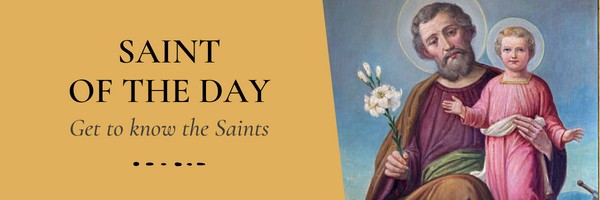We ask you, urgently: don't scroll past this
Dear readers, Catholic Online was de-platformed by Shopify for our pro-life beliefs. They shut down our Catholic Online, Catholic Online School, Prayer Candles, and Catholic Online Learning Resources essential faith tools serving over 1.4 million students and millions of families worldwide. Our founders, now in their 70's, just gave their entire life savings to protect this mission. But fewer than 2% of readers donate. If everyone gave just $5, the cost of a coffee, we could rebuild stronger and keep Catholic education free for all. Stand with us in faith. Thank you.Help Now >
Catholics, Art and Mission
FREE Catholic Classes
The relationship between art and the Christian mission in the world has been a mixed one over two millennia of Christian history.
Highlights
Catholic Online (https://www.catholic.org)
6/21/2008 (1 decade ago)
Published in U.S.
LOS ANGELES (Catholic Online) - What is this relationship between the Christian mission and artistic expression, including the Theatre, supposed to be?
An answer to this question was set forth in the late Servant of God, John Paul II's "Letter to Artists". In it the late Pope called for "epiphanies of beauty" and encouraged the flourishing of all the arts as a part of the fabric of a renewal of humanity.
He addressed this little known letter to "To all who are passionately dedicated to the search for new "epiphanies" of beauty so that through their creative work as artists they may offer these gifts to the world (John Paul II)."
The text begins with the profound words from the Book of the Beginnings, Genesis: "God saw all that He had made, and it was very good (Genesis 1:31). It does so at a profoundly important time in human history when Christians are called to once again flourish in all the "theatres" of the human experience and so herald a new Christian missionary age.
The relationship between art and the Christian mission in the world has been a mixed one over two millennia of Christian history. This is particularly true in the arena of artistic expression referred to as Theatre.
In the First Christian Millennium, the hostile environment into which the nascent Christian message and mission were sent, the theatre had devolved to a sad low. The true revelation of beauty, which characterizes true art, had faded. However, it still survived, as it always will, in Art.
There is little doubt that the early Christian leaders discouraged participation in what was then called the theatre. How could this be in a faith that proclaims the Incarnation of Jesus Christ as having touched and transformed the entirety of all human experience?
It was because the theatre of that time reflected the debauchery of the culture and its degradation of the dignity of the human person. Because of that, many dramatic expressions of Art were considered indecent and a threat to a life of virtue for Christians.
Unfortunately, that hostility between the Christian Gospel (the only message capable of truly humanizing sinful men and women as well as debased art) and the theatre continued into the third and fourth centuries when much theatrical presentation mocked the Christian rites and the Christian message.
However, the early Christian community had a wonderful sense for theatre and artistic expression. The fullness of liturgical expression and the very real and human works produced by Christian artists demonstrate this fact.
When we fast forward to the Second Christian millennium we discover that the first half of the Millennium witnessed a mature flowering of a Christian worldview. This resulted in extraordinary developments in art and Christian artistic participation. Both found favorable soil in a cultural climate created by the Renaissance.
In the east, the richness of an iconographic worldview flourished in all realms of artistic expression. In the west the flourishing of the arts in the middle ages corresponded to a flourishing in Western Christian artistic expression.
It did not last long.
In the sad aftermath of the so-called "Enlightenment" and the reactions to its after-effects in some segments of what has been called the Protestant reformation, this millennium marked another season of suspicion -- if not hostility -- at least in some circles.
That was because in some Christian circles, the theatre became associated with an anthropology (a view of man) that saw nothing good in him. This was probably most starkly expressed in that corner of "reformation" Protestantism known as Calvinism.
Thus, the theatre, though for different reasons, was again seen as suspect at best and discouraged in many Christian circles. It, like man, was considered to be totally corrupt. How sad and how limited a view of both man and the world created for him by a loving God. This is not the Catholic vision.
We have begun a Third Christian Millennium.As it began, a playwright was seated in the Chair of Peter. We witnessed him live - and then die - with true beauty. Now, another Artist is seated in the Chair of Peter, Benedict XVI. He truly loves music and is a patron all of the arts.
He continues the work of opening the eyes of the Church, and the world into which she is sent, to the heart of beauty and its place in the mission of the Church.
In his "Letter to Artists" John Paul set forth an inspiring and ambitious call for the participation of artists in the renewal of humanity through the flourishing of a new Christian humanism.
With a prophetic clarity he wrote of the "artistic vocation" as one who has carried it in his own heart and incarnated it in his numerous plays.
Recognizing this mixed history of the relationship between art and Christian mission he wrote these words concerning the modern era:
"... in the modern era, alongside this Christian humanism which has continued to produce important works of culture and art, another kind of humanism, marked by the absence of God and often by opposition to God, has gradually asserted itself. Such an atmosphere has sometimes led to a separation of the world of art and the world of faith."
That separation has no place in a fully mature Catholic worldview. It flows from a poor anthropology, an inadequate understanding of the scope and implications of the paschal mystery.
All too often it can promote a missionary approach that views "the world" as a hostile environment from which the Christian and the Church must recoil rather than as a palate worthy of loving transformation by those who carry on the redemptive mission of Christ the Artist.
Perhaps in this Third millennium, we are getting the relationship right once again. Perhaps we will see more of the 'epiphanies' of beauty" John Paul II proclaimed, and Pope Benedict continues to promote, as we enter into a new missionary age.
---
'Help Give every Student and Teacher FREE resources for a world-class Moral Catholic Education'
Copyright 2021 - Distributed by Catholic Online
Join the Movement
When you sign up below, you don't just join an email list - you're joining an entire movement for Free world class Catholic education.
- Easter / Lent
- Ascension Day
- 7 Morning Prayers
- Mysteries of the Rosary
- Litany of the Bl. Virgin Mary
- Popular Saints
- Popular Prayers
- Female Saints
- Saint Feast Days by Month
- Stations of the Cross
- St. Francis of Assisi
- St. Michael the Archangel
- The Apostles' Creed
- Unfailing Prayer to St. Anthony
- Pray the Rosary
![]()
Copyright 2025 Catholic Online. All materials contained on this site, whether written, audible or visual are the exclusive property of Catholic Online and are protected under U.S. and International copyright laws, © Copyright 2025 Catholic Online. Any unauthorized use, without prior written consent of Catholic Online is strictly forbidden and prohibited.
Catholic Online is a Project of Your Catholic Voice Foundation, a Not-for-Profit Corporation. Your Catholic Voice Foundation has been granted a recognition of tax exemption under Section 501(c)(3) of the Internal Revenue Code. Federal Tax Identification Number: 81-0596847. Your gift is tax-deductible as allowed by law.










